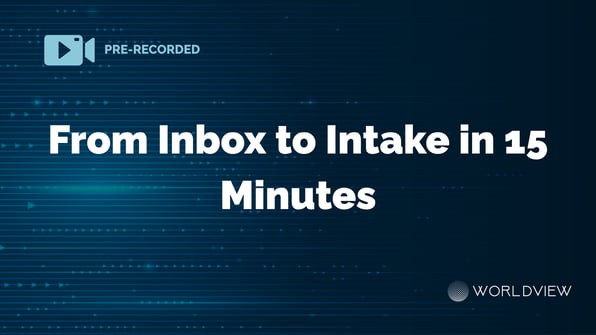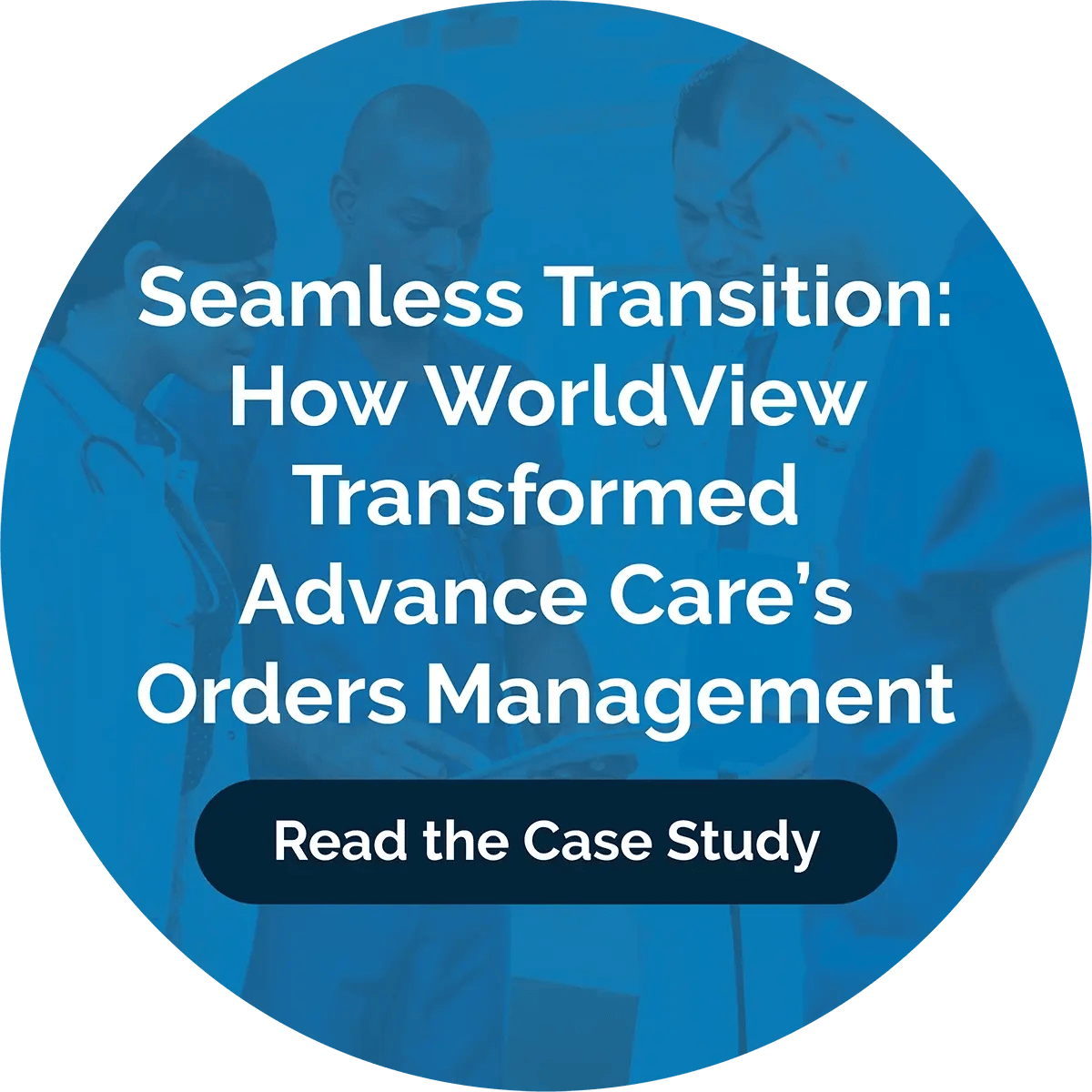Webinar Recording: From Inbox to Intake in 15 Minutes

Referral lag time is one of the biggest hidden drains on your agency’s revenue and your intake team’s sanity. When documents land in multiple inboxes - fax, email, EMR portals - intake turns into a slow, manual process filled with missed referrals, errors, and unnecessary delays.
In this mini webinar, we show how home health and hospice agencies are using simple process improvements paired with Referral AI to move referrals from inbox to intake in under 15 minutes. You’ll learn how centralized queues, automation, and clean EMR integrations are helping teams respond faster, reduce missed referrals, and unlock revenue sooner without burning out their staff.
What you’ll learn:
✅ The three most common delays that slow intake—and how to fix them – Time stamp: 2:25
✅ How Referral AI identifies referrals, extracts patient data, and routes them in real time – Time stamp: 5:11
✅ Common mistakes agencies make that lead to referral delays – Time stamp: 8:35
✅ How faster intake improves staff satisfaction and revenue—at the same time – Time stamp: 9:02
✅ The average implementation timeline and how WorldView works with your EMR – Time stamp: 11:33
Plus, get answers to common questions about handling faxed referrals, getting team buy-in, and how automation fits into your current intake process – Time stamp: 9:37
WEBINAR TRANSCRIPT
Cortney Swartwood [00:05]
Hey everybody, and welcome to our third session in the mini webinar series. I’m Cortney Swartwood, Senior Marketing Manager here at WorldView. Thanks so much for joining today’s webinar, “From Inbox to Intake in 15 Minutes.”
If you’ve been with us before, you know I like to start with a few tips to help you get the most out of this session. On your screen, you’ll see the presentation, a Q&A window, and a survey. All of these are movable and resizable, so set it up however works best for you.
If you have questions, please drop them in the Q&A window—not the chat—so we can easily track and answer them. If you run into technical issues, pop those in there as well. The survey window lets you give feedback and request more information about our solutions.
There’s also a resources icon on the bottom toolbar where you can download today’s slides. And, as always, this webinar is being recorded. You’ll get a link tomorrow to rewatch or share with your team.
Today we’re diving into what’s really happening between a referral hitting your inbox and getting routed to your intake team. The goal is to turn that lag time from hours—or even days—into just minutes. I’ve got Amy Ingram here, our Director of Customer Success at WorldView, and I’ll hand it over to her to introduce herself.
Amy Ingram [01:49]
Thanks, Cortney. I’m Amy Ingram, Director of Customer Success here at WorldView. I’ve been with WorldView for quite a few years and I’m excited to walk you through the intake process today.
Let’s start with the inbox bottleneck—because most agencies don’t actually have an intake problem. They have an inbox problem. Faxes land in one place. Emails from referral sources land somewhere else. Digital referrals from your EMR go to a completely different place. There’s no single queue where intake can see everything in real time.
When that happens, referrals get missed, intake scrambles, and response times slip. The solution isn’t just “work faster”—it’s removing the sorting step altogether.
There are three delays that really kill intake speed. First, no centralized queue. If your team is checking five different inboxes—email, fax lines, portals—you’ve already lost time. Second, no filtering. Intake can’t easily tell what’s urgent at a glance, so prioritizing becomes a guessing game. Third, no routing rules. Without automation, the right person might not even see the referral until hours later.
Speed isn’t about pressure. It’s about process. You can’t improve time to intake unless these three things are fixed.
So how does WorldView help speed this up? Our Referral AI platform is fully integrated into WorldView. As faxes or referrals come in, the system reads those documents, identifies referrals, and automatically sorts them into a dedicated intake queue.
That intake queue means your team knows immediately when a referral comes in. The system also extracts key patient data—name, date of birth, diagnosis—so when your team sees the referral, that information is already visible. No more manually scanning through documents and keying everything into the EMR.
Referral AI continues to learn over time. There’s a shared knowledge base across agencies, and if a referral is ever miscategorized, feedback trains the system to do better next time.
The human effort stays the same—reviewing, triaging, making care decisions—but the routing is automated, and that’s where the time savings happens.
So what do you need on your side to make this work? You need that AI-powered triage queue connected to your inbound referral sources. Then, you’ve got a smart intake queue that highlights key patient information right away. Everyone on the intake team has real-time access to that centralized queue—no more bouncing between inboxes or systems.
And then there’s the integration with your EMR. WorldView pushes that referral data directly into your EMR and creates a new patient chart using the information extracted from the referral.
When all those pieces connect, intake starts moving without the chaos of tracking paper. You can still call the family or the facility, but you’re not wasting time digging through documents to figure out who or what you’re dealing with.
A few common pitfalls we see? Teams are still manually tracking referrals in spreadsheets. There’s no clear ownership after hours, so referrals sit until morning. And there are just too many steps between getting a referral and acting on it.
When you remove the manual sorting, your team has more bandwidth for real care conversations—that’s what really drives results.
Agencies that use Referral AI with WorldView are seeing response times to referral partners drop by 80%. Referrals stop falling through the cracks because everything lands in one centralized space. The intake team feels less overwhelmed because everyone has visibility, and revenue goes up because capacity unlocks sooner.
The key takeaways? A centralized queue is everything. AI-powered triage drastically reduces time spent sorting and entering data. And EMR integration means fewer keystrokes and less manual entry. This is about building smarter systems around your people—so they can move faster and focus on care.
Cortney Swartwood [09:13]
Amazing. Thanks, Amy. This is all super helpful—especially knowing how small system changes can make a faster referral process actually achievable. We do have time for a few questions, so let’s jump into those.
First question: Is Referral AI something that needs to replace our current intake process?
Amy Ingram [09:37]
No, it doesn’t—and it shouldn’t. Referral AI works alongside your current process. It helps you centralize, organize, and prioritize referrals, but your team is still the one driving decisions and managing intake. The system supports your process; it doesn’t replace it.
Cortney Swartwood [10:03]
Perfect. Thanks for clearing that up. Next question is one we hear a lot—what if we’re mostly working off faxes? Can this still work for us?
Amy Ingram [10:17]
Absolutely. Faxes are still the most common way referrals come in for most agencies. The key is routing them into a digital intake queue inside WorldView, where AI can tag and sort those referrals just like it does with digital sources.
Cortney Swartwood [10:40]
Got it. So faxes definitely aren’t a barrier here. Next question: How do you get buy-in from the intake team or leadership for a new system like this?
Amy Ingram [10:56]
Great question. Start by showing them the before-and-after. Let them see how much less time they’ll spend digging through inboxes or documents. For leadership, this directly impacts the bottom line. Faster referrals mean faster revenue. Another tip—bring the intake team into setup conversations early. Ask them what they wish they had, and then build the system to match that.
Cortney Swartwood [11:22]
That’s great advice. Once the team is on board, how long does implementation typically take?
Amy Ingram [11:33]
Most agencies are live within four to six weeks. That depends on what we’re implementing for you and the size of your agency, but the technical side moves pretty quickly—especially if you’re using one of our EMR partners.
Cortney Swartwood [11:52]
Speaking of EMRs, do agencies need their EMR involved to make this work?
Amy Ingram [12:01]
Typically, no. WorldView already has integrations with Axxess, Homecare Homebase, and KanTime, with more coming soon. That means most of the heavy lifting is already done. And if you use an EMR outside those partners, we can set up a standalone solution without needing the EMR involved.
Cortney Swartwood [12:33]
Perfect. Thank you so much, Amy. And thank you to everyone who joined today. If we didn’t get to your question, we’ll follow up within the next day or two.
We hope this helped give you a better sense of how our AI infrastructure supports faster intake with less stress. Please complete the last couple of questions on the survey and hit submit when you’re ready.
Make sure to join us for our next mini webinar, “The Revenue Impact of Better Intake” with John Hickey. He’ll walk us through how intake performance ties directly to revenue and how to make the business case for change. If you have any extra questions, the email is on the screen. Otherwise, we’ll see you next time. Have a great day.
Amy Ingram [13:32]
Thanks, everyone.
Blog Post Tags
Industry Insights, Healthcare, Hospice, AI, referrals, General, Blog, leadership, Referral AI, Healthcare TrendsGet Awesome Content Delivered Straight to Your Inbox!
Posts by topic
- Healthcare
- Business
- AI
- Hospice
- AP Workflows
- Home Care Management
- hospice-care
- General
- Industry Insights
- agency
- Blog
- Commercial
- reporting
- Data Analytics
- billing
- referrals
- News
- Referral AI
- business goals
- Operations
- business development
- partners
- Integration
- Healthcare Trends
- leadership
- Medicare
- Compliance
- audit
- medicaid
- Better Charting
- regulations
- Application
- Automation
- finance
- CRM
- DMSi
- Events
- KanTime
- Press Release
- Revenue Growth
- Announcements
- Artificial Intelligence
- EHR
- ESign
- Guides
- Homecare Homebase
- Mobile
- Physician Order Tracking
- axxess
- clinical
- interoperability
- payor See All See Less


.png?width=596&name=WV%20Hc%20Clinical%201%20Web%20(3).png)
.png?width=596&name=WV%20Hc%20Clinical%201%20Web%20(2).png)
.png?width=596&name=WV%20Hc%20Clinical%201%20Web%20(5).png)